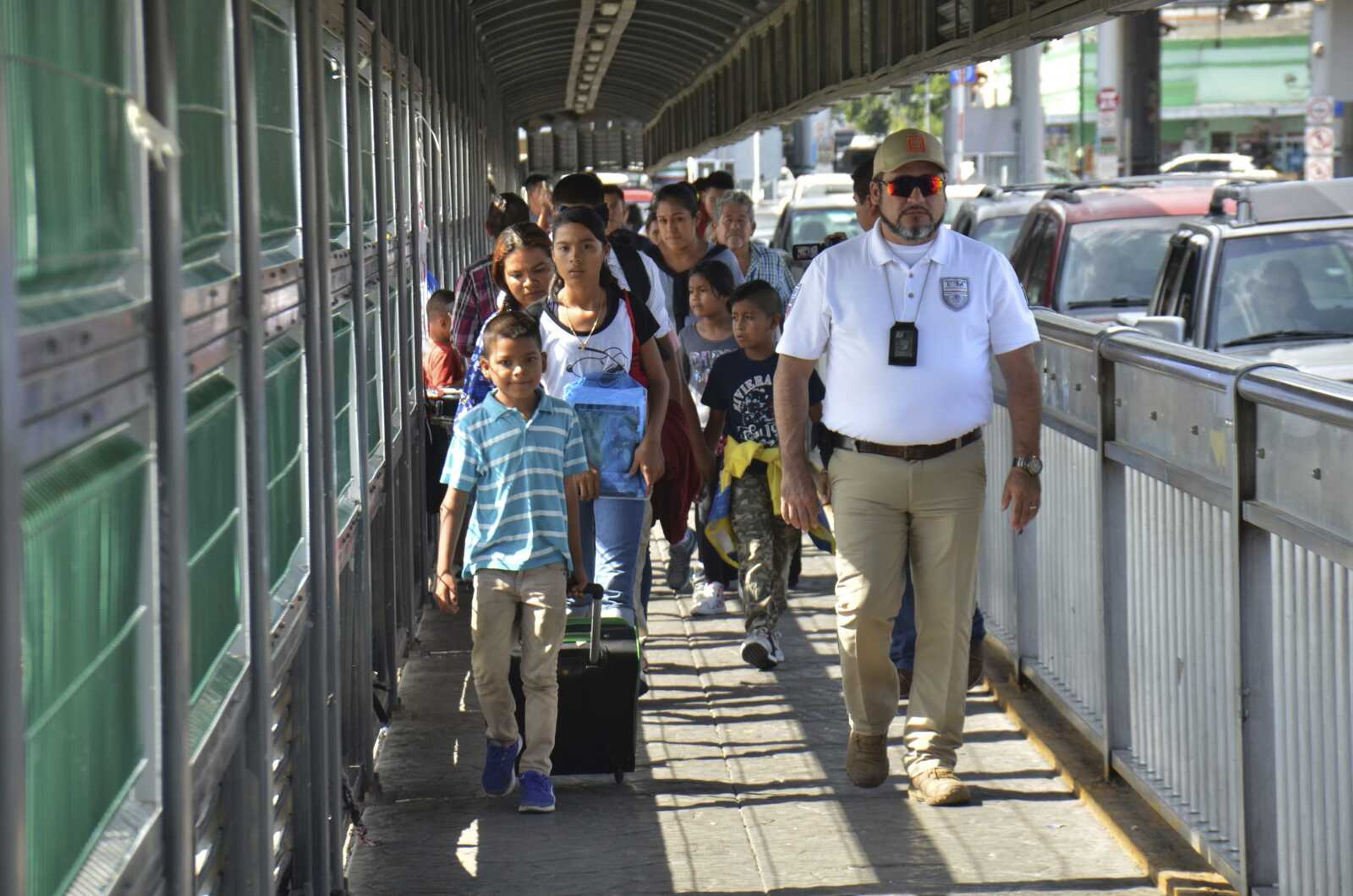'Remain in Mexico' expands to dangerous part of border
HOUSTON -- The U.S. government on Friday expanded its policy requiring asylum seekers to wait outside the country to one of Mexico's most dangerous cities, where thousands of people are already camped, some for several months. The Department of Homeland Security said Friday it would implement its Migrant Protection Protocols in Brownsville, Texas, across the border from Matamoros, Mexico. DHS says it anticipated the first asylum seekers being sent back to Mexico on Friday...
HOUSTON -- The U.S. government on Friday expanded its policy requiring asylum seekers to wait outside the country to one of Mexico's most dangerous cities, where thousands of people are already camped, some for several months.
The Department of Homeland Security said Friday it would implement its Migrant Protection Protocols in Brownsville, Texas, across the border from Matamoros, Mexico. DHS says it anticipated the first asylum seekers being sent back to Mexico on Friday.
Under the so-called "Remain in Mexico" policy, asylum seekers are briefly processed and given a date to return for an immigration court hearing before being sent back across the southern border. Since January, the policy has been implemented at several border cities, including San Diego and El Paso, Texas.
The U.S. is trying to curtail the large flow of Central American migrants passing through Mexico to seek asylum under American law. The busiest corridor for unauthorized border crossings is South Texas' Rio Grande Valley, where Brownsville is located. Other cities in the Rio Grande Valley were not immediately included in the expansion.
DHS said it had coordinated with the Mexican government on the policy. The Mexican government did not immediately respond to requests for comment. But the Trump administration has pressured Mexico to crack down on migrants, threatening earlier this year to impose crippling tariffs until both sides agreed on new measures targeting migration.
Matamoros is at the eastern edge of the U.S.-Mexico border in Tamaulipas state, where organized crime gangs are dominant and the U.S. government warns citizens not to visit due to violence and kidnappings.
The city is also near where a Salvadoran father and his 23-month-old daughter were found drowned in the Rio Grande, in photos shared around the world.
Many people, including families with young children, have slept for the last several months in a makeshift camp near one of the international bridges. Thousands more stay in hotels, shelters or boarding houses. Only a few migrants daily have been allowed to seek asylum under another Trump administration policy limiting asylum processing known as "metering."
A list run by Mexican officials has more than 1,000 people on it, said Elisa Filippone, a U.S.-based volunteer who visits Matamoros several times a week to deliver food and donated clothes. But many others not on the list wait in shelters. There are frequent rumors migrants are shaken down for bribes to join the list, Filippone said.
She described a desperate situation potentially made worse if people are forced to wait longer in Mexico for their asylum claims to be processed.
"I'm afraid that Matamoros is about to catch on fire," she said.
Filippone said Friday she saw the camp closest to one of the bridges being cleared away, though it was not immediately clear why or where the people detained would go.
DHS recently implemented the "Remain" policy for migrants in Nuevo Laredo, across from Laredo, Texas. About 1,800 asylum seekers and migrants are currently waiting in Nuevo Laredo, where some have reported being kidnapped and extorted by gangs.
"I don't want to go out on the street. I'm afraid the same men ... will do something to me or my boys," said one woman, insisting on speaking anonymously out of fear for their safety.
People in Nuevo Laredo were told to return in September for U.S. court dates. At other points of the border, wait times have stretched to several months.
Unlike in criminal court, the U.S. government does not have to provide lawyers to people in the immigration court system. Attorneys in South Texas have long questioned where they could meet with potential clients in Tamaulipas.
Many migrants who get to the U.S. have exhausted all their resources by the time they arrive, said Lisa Brodyaga, an attorney who has represented asylum seekers for decades.
"It would be extremely difficult for them to find attorneys who would have the time and the ability and the willingness to expose themselves to what's going in Matamoros," she said. "I'm not sure how it's going to work."
Connect with the Southeast Missourian Newsroom:
For corrections to this story or other insights for the editor, click here. To submit a letter to the editor, click here. To learn about the Southeast Missourian’s AI Policy, click here.










